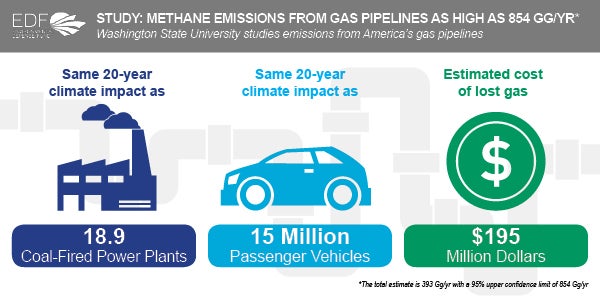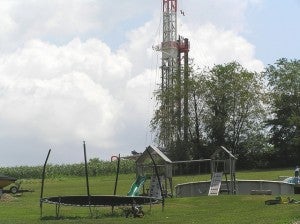Th e most important takeaway from a study released today by Washington State University (WSU) is that despite improvements, large amounts of methane continue to leak from the nation’s local natural gas systems. Because methane is a particularly potent greenhouse gas, these yearly emissions are comparable to the CO2 from as many as 19 coal-fired power plants.
e most important takeaway from a study released today by Washington State University (WSU) is that despite improvements, large amounts of methane continue to leak from the nation’s local natural gas systems. Because methane is a particularly potent greenhouse gas, these yearly emissions are comparable to the CO2 from as many as 19 coal-fired power plants.
The estimated value of the gas escaping each year, by the way, is up to $195 million.
Although these figures represent a major ongoing challenge for gas utilities, they do reflect substantial improvement over the past two decades, thanks to a combination of effort and investment by utilities, along with a series of both state and federal policy changes enacted since 1992.
The new findings reinforce the fact that when regulators and companies both set their minds to fixing a problem, they can get some pretty good results. Methane, the primary component of natural gas, is a particularly powerful climate warmer – 84 times more potent than carbon dioxide over the first 20 years after it is released to the atmosphere.
While they remain a serious problem, the ongoing utility emissions also represent an important opportunity for companies and regulators to make a big dent in greenhouse pollution. EDF believes the study underscores three major areas where improvement is necessary: Read More











 Leading national companies in North Carolina want more choice and competition when it comes to energy, including where it comes from and who they buy it from. That’s the message recently delivered to the North Carolina legislature in a letter signed by 10 corporate giants in the state.
Leading national companies in North Carolina want more choice and competition when it comes to energy, including where it comes from and who they buy it from. That’s the message recently delivered to the North Carolina legislature in a letter signed by 10 corporate giants in the state.

